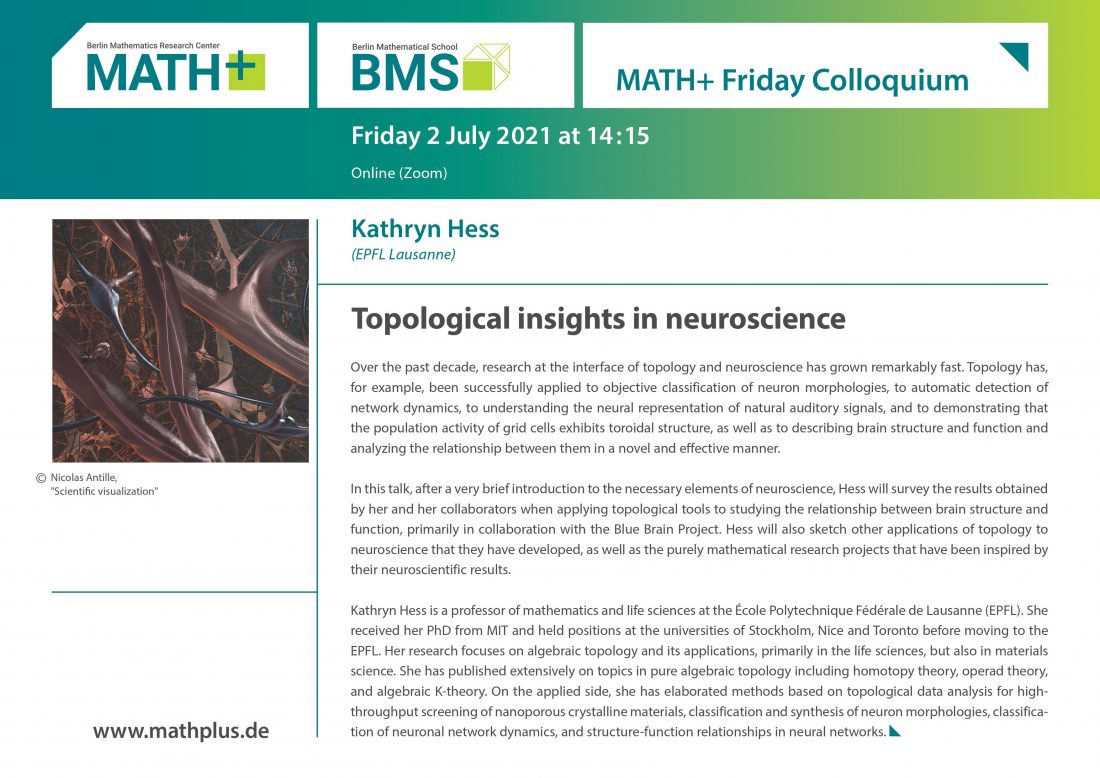2 July – Kathryn Hess: Topological insights in neuroscience
Over the past decade, research at the interface of topology and neuroscience has grown remarkably fast. Topology has, for example, been successfully applied to objective classification of neuron morphologies, to automatic detection of network dynamics, to understanding the neural representation of natural auditory signals, and to demonstrating that the population activity of grid cells exhibits toroidal structure, as well as to describing brain structure and function and analyzing the relationship between them in a novel and effective manner.
In this talk, after a very brief introduction to the necessary elements of neuroscience, Hess will survey the results obtained by her and her collaborators when applying topological tools to studying the relationship between brain structure and function, primarily in collaboration with the Blue Brain Project. Hess will also sketch other applications of topology to neuroscience that they have developed, as well as the purely mathematical research projects that have been inspired by their neuroscientific results.
Kathryn Hess is a professor of mathematics and life sciences at the École Polytechnique Fédérale de Lausanne (EPFL). She received her PhD from MIT and held positions at the universities of Stockholm, Nice and Toronto before moving to the EPFL. Her research focuses on algebraic topology and its applications, primarily in the life sciences, but also in materials science. She has published extensively on topics in pure algebraic topology including homotopy theory, operad theory, and algebraic K-theory. On the applied side, she has elaborated methods based on topological data analysis for high-throughput screening of nanoporous crystalline materials, classification and synthesis of neuron morphologies, classification of neuronal network dynamics, and structure-function relationships in neural networks.


